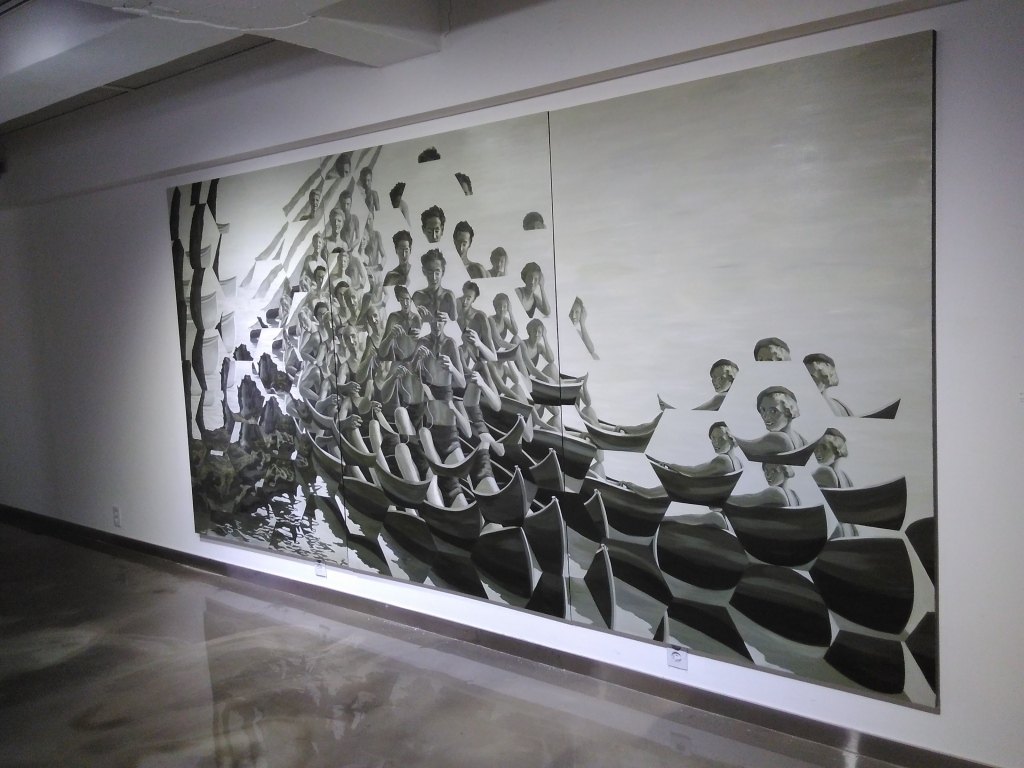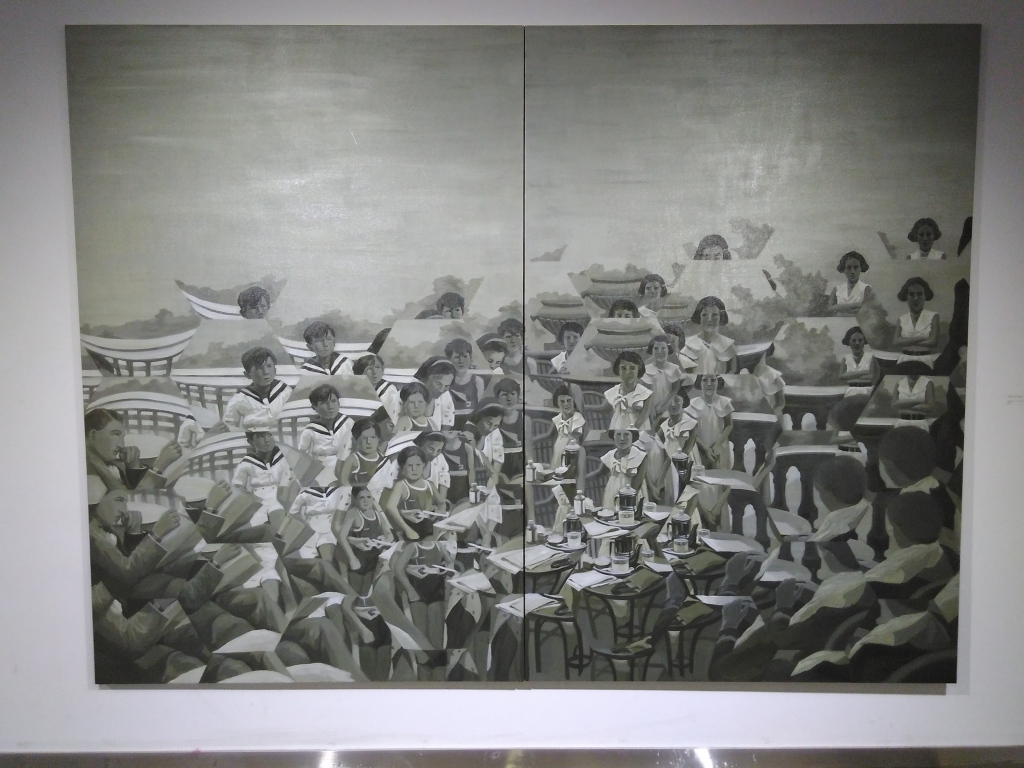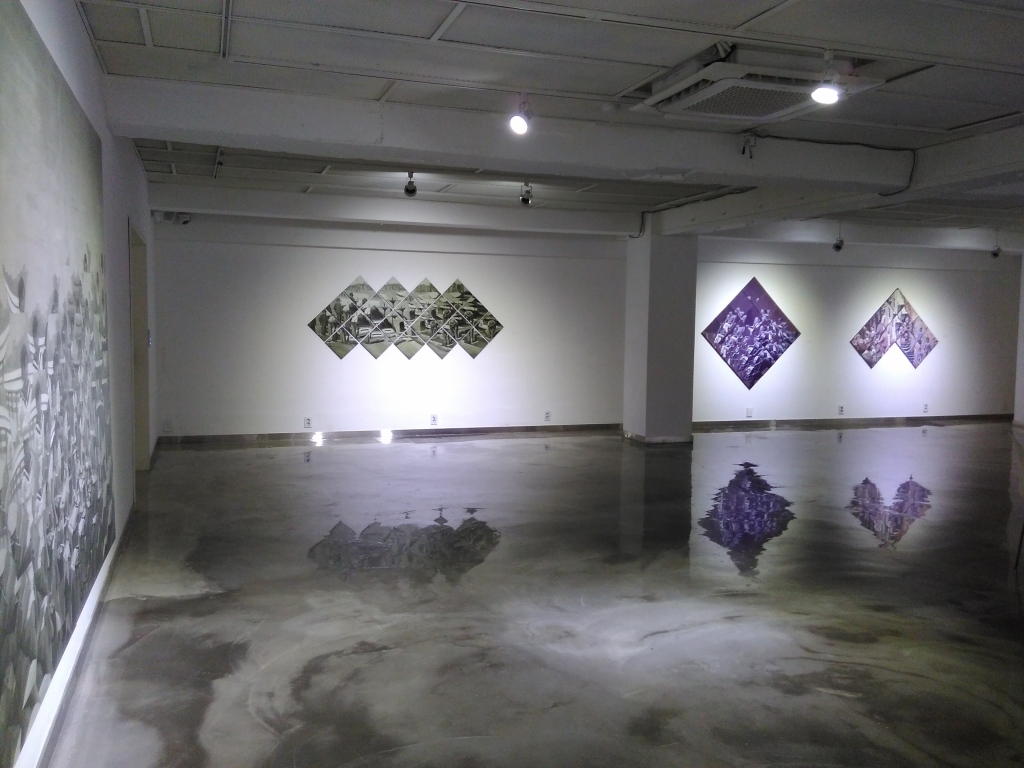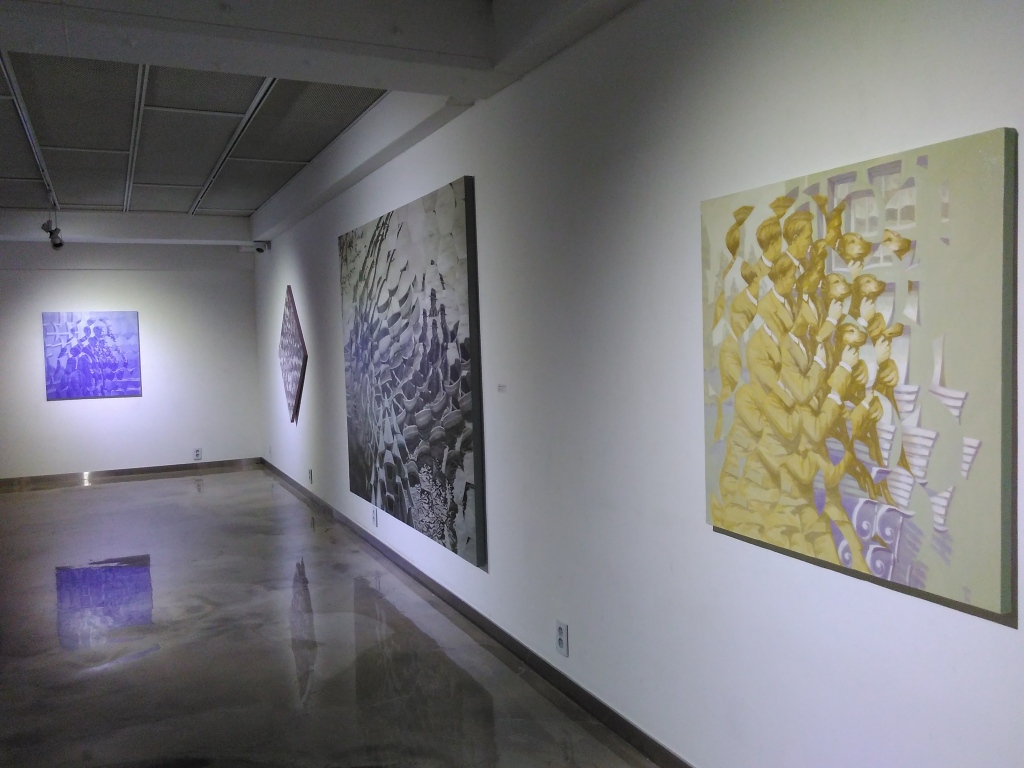Seoul, September 16 – 30, 2015, http://www.ujungartcenter.com/
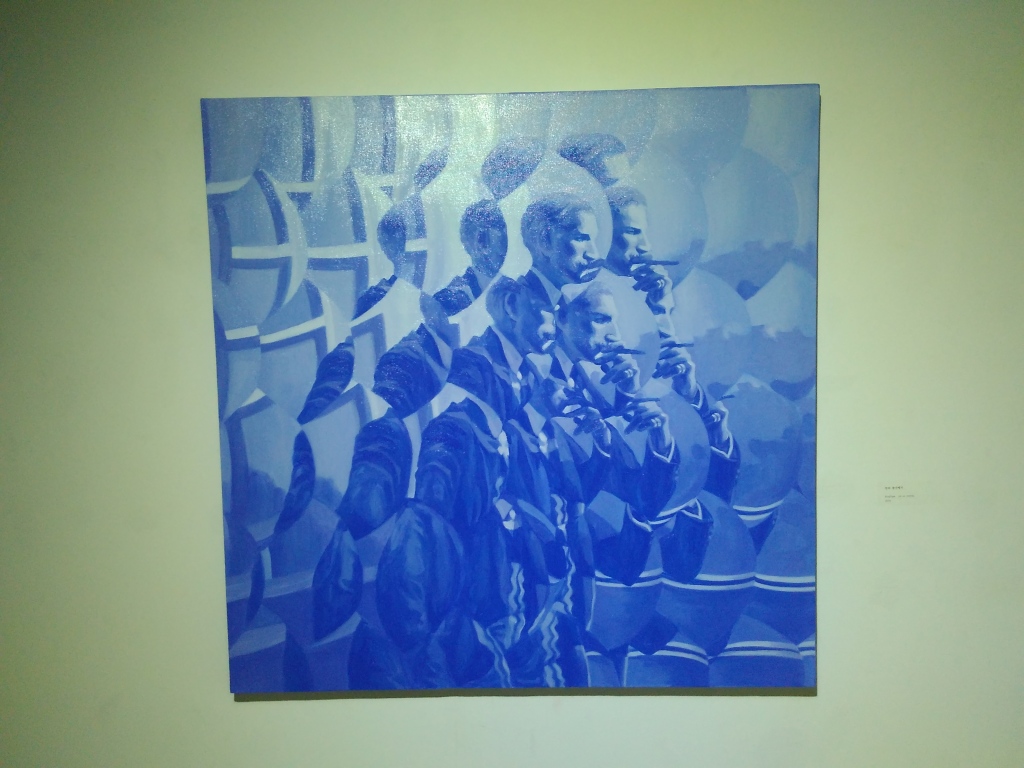 An exhibition of paintings. All seem to be based on old black and white photographs, but I did not know why, so I assume it is the preferred period in which the artist would like to live if she could choose. The element of fascination with the past and the dream-like-ness of any memory is further amplified by the composition technique, which seems to stem from using some kind of kaleidoscope which decomposes the selected images into repetitive hexagonal or circular shapes.
An exhibition of paintings. All seem to be based on old black and white photographs, but I did not know why, so I assume it is the preferred period in which the artist would like to live if she could choose. The element of fascination with the past and the dream-like-ness of any memory is further amplified by the composition technique, which seems to stem from using some kind of kaleidoscope which decomposes the selected images into repetitive hexagonal or circular shapes.
The viewer is dealing with a double, if not triple, transformation: First, a photograph echoing the past is selected by the artist, then (second) the artist adds another layer of echo or delay in the form of a kaleidoscope, then (third), this transformed view of the historic record is re-recorded in the form of an oil painting. It is a play with recorded time, but even more an investigation into part-whole relationship contained within images. How much optical deformation is possible while keeping the representational value intact?
Metaphorically, the recording of the fragmentation of a photograph by an optical device could be also related to the rise of digital technology, where all images are a result of decomposition (into pixel-parts) and later re-composition (into a digital images). However the artworks do not provide a clear-cut position towards the digital. Much more, I sense a slight nostalgia, for times and things past, a category into which both optical toys and old photographs can be placed.